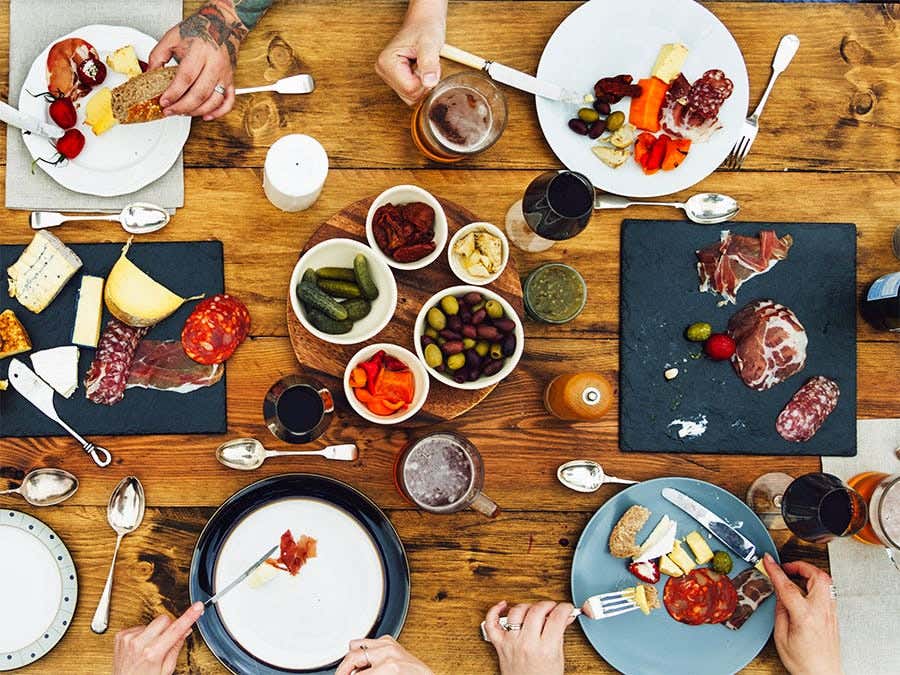From entrées to desserts, from meat to shellfish, from French cuisine to Asian, food and wine pairings are as varied as cuisine is nuanced. Though the golden rule is to have fun above all, some basic pointers in the art of pairing can bring out hitherto undetected nuances in both your dishes and in your wine.
Let us introduce you to the art of harmony, first with the aromatic profile and intensity of the wine, and then with the nature of the food and its preparation. Learn the basic rules and let your creativity go.
Pairings with wine
Because more than one pairing is often possible, harmonizing wine and food is often subjective. You can always adjust a pairing to your tastes. What you’re looking for is the moment when the flavours harmonize to create a happy confluence they couldn’t create alone.
Here is a simple guide to great wine
and food pairings every time!
Step 1
Look to taste tags
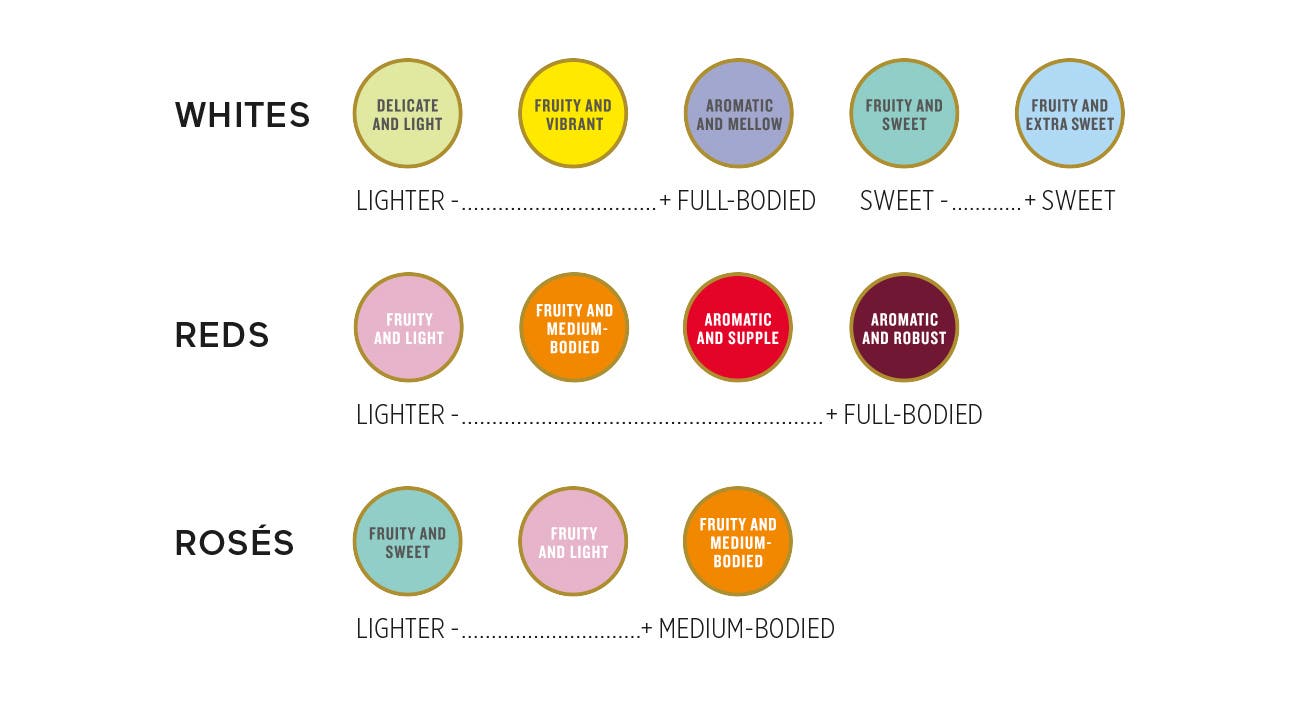

Step 2
Think of the aromatic level of your dish
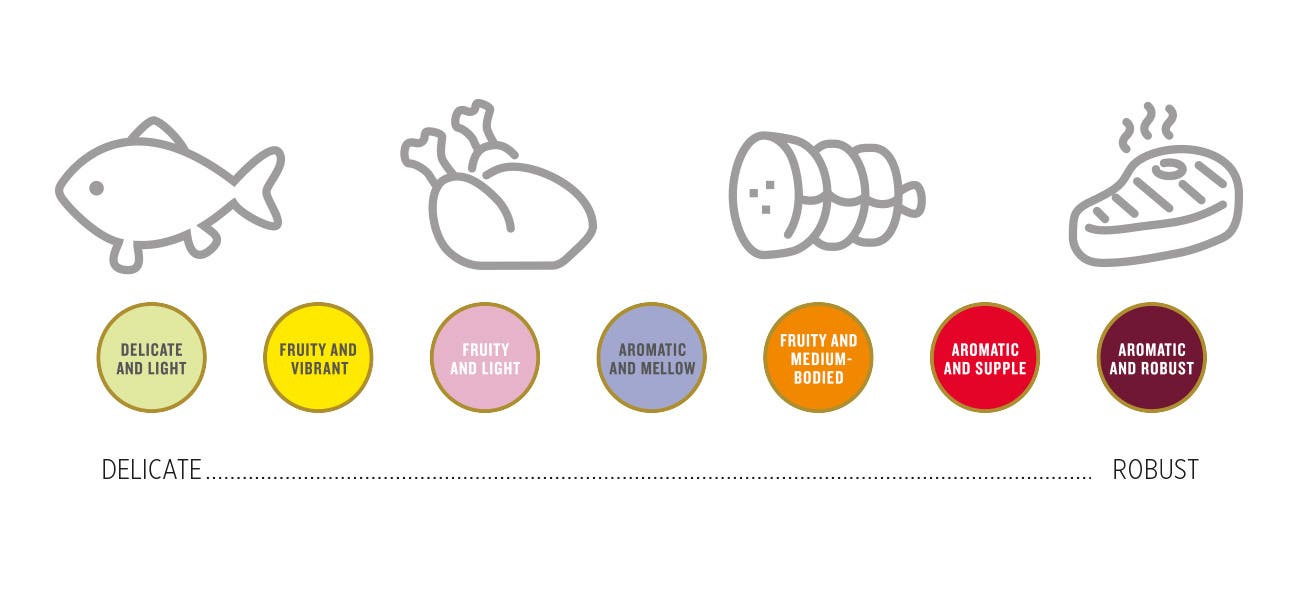

Step 3
Consider the cooking method
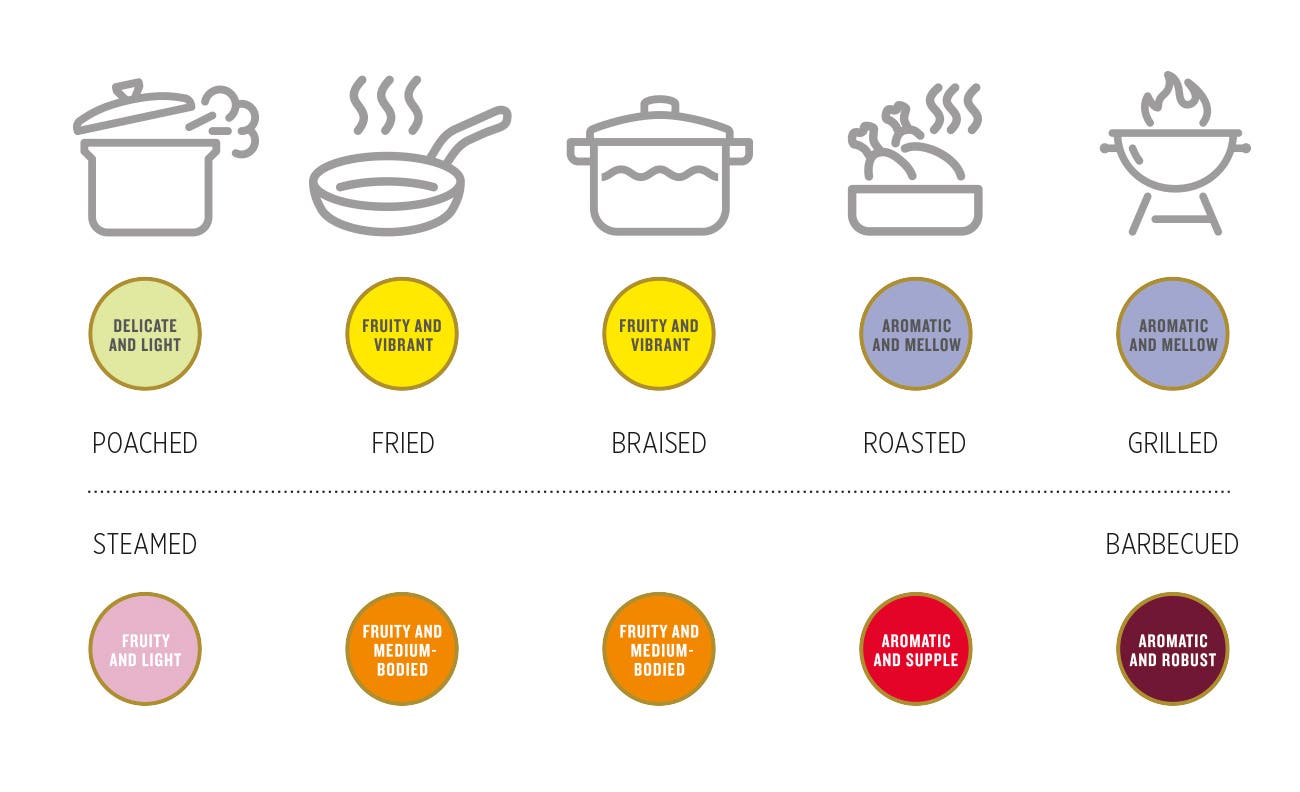

Red wine
In general, the more intense and tasty a dish is, the stronger a wine should be. To accompany game or lamb, for instance, a full-bodied wine will do. Lighter wines will harmonize with foods of similar intensity, such as white meats, poultry, pasta with tomato or rosée sauces, and fish, such as salmon. Medium-bodied wines are versatile. The more fruity ones will harmonize with pasta and meat sauce, and sausages; others, with a more woody, spicy profile, will bring out the best in grilled beef and semi-strong cheeses.
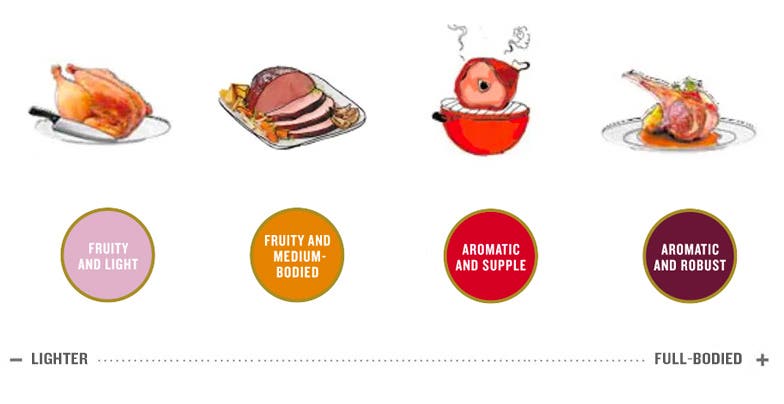
See other possible pairings with red wine
Cheese
Explore different styles! If you opt for a strong cheese, go for a full-bodied yet supple wine. With more subtle cheeses, pick a light and refreshing wine.
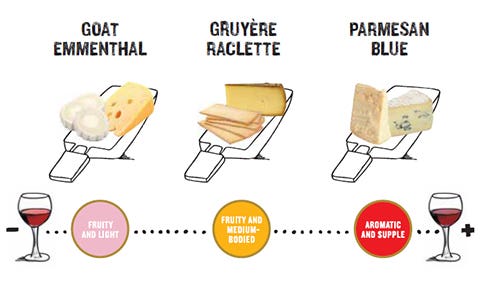
Sauces
To each sauce its wine! The more robust the wine, the more the sauce must be intense (like pepper for example).
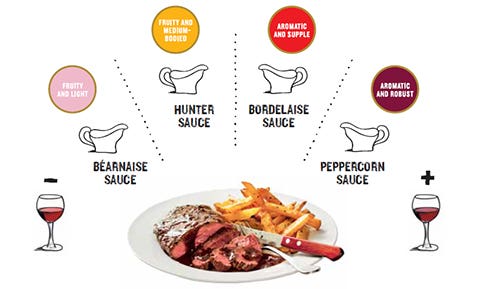
Shepherd's Pie
Reinvent the classic Shepherd’s pie! With a delicate meat like veal, opt for a fruity wine. With a more pronounced and woody-tasting meat such as game, choose a full-bodied wine.
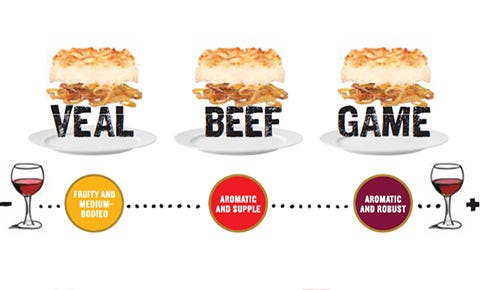
Tajine
With a vegetable tajine, sip a Fruity and medium-bodied wine with lots of suppleness. With a white-meat option like chicken, choose an Aromatic and supple wine to support all the spices. An Aromatic and robust red will pair well with strong meats like lamb.
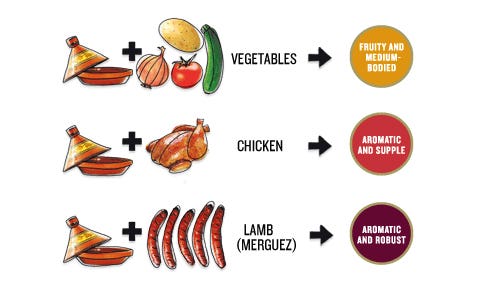
Asian rolls
With vegetables or raw fish, instead of reaching for a white wine, step off the beaten paths and dare a fruity red wine with silky tannins. With spicy or wild meats, go for a more full-bodied wine with complex aromas.
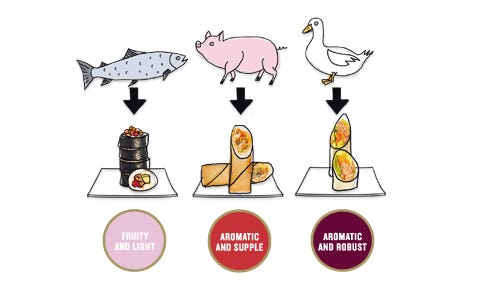
White wine
Certain flavours round each other out to perfection. The successful food and wine pairer will consider the dominant flavour of the dish they are serving the white wine with. Light wines with good acidity, for instance, bring out the best in shellfish, shrimp and lean fish, while rounder, fat-textured, more intense wines harmonize with dishes in cream sauce, or baked Brie. Dishes seasoned with fruit, lemongrass or ginger, or slightly sweet dishes, will be enhanced with a wine with residual sugar.
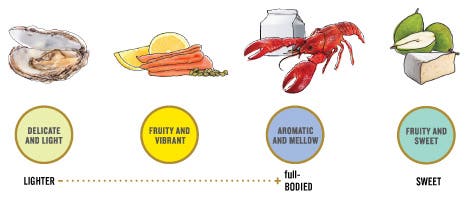

Rosé
When they’re light and fruity, rosés are the ideal aperitif. They’re also good with fish or shellfish, salads, or pastas with a light, fresh sauce. More generous, affirmative rosés go splendidly with more substantial dishes like salmon, veal or pork. Sweet, fruity wines, delicious as aperitifs, go well with white meats, poultry and fish with sweet-and-sour or fruit sauces.
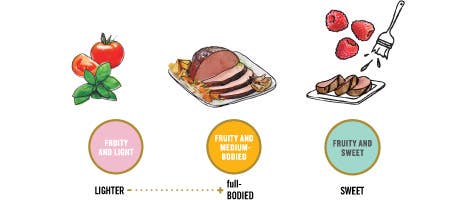

Pairings with Champagne
Brut and dry
Champagnes and sparkling wines with low sugar content are generally served alone as an aperitif or with smoked salmon, goat cheese, shellfish, rabbit rillette or oysters. The more flavourful and full-bodied vintage sparkling wines go well with crab, lobster, poultry in sauce and foie gras.
Demi-sec and sweet
The sweeter sparkling wines generally accompany a sweeter kind of dish. Demi-secs are good with biscotti, a sabayon, or dried-fruit desserts. Sweet sparkling wines complement fruit salads, crème brûlée and vanilla-flavoured desserts.
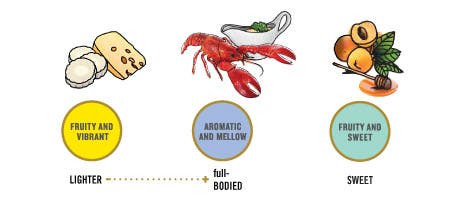

Pairings with beer
More often than not, beer is drunk alone—simply for its taste or to refresh when it’s hot or to quench a thirst.
Beer lovers with a penchant for something unique will choose a beer of character with stronger aromas and flavours.
The beers known as tasting beers are often found in the family of ales or Lambic beers, made from spontaneous fermentation and displaying a more or less acidic profile and a light foam like in the gueuze style. But there are also some very flavourful lagers, like the Double Bock.
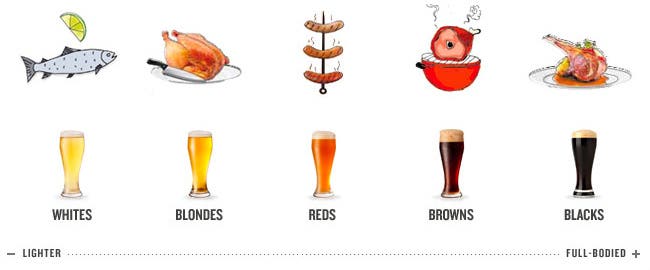

For successful pairings
Search for harmony and you’re sure to get a successful food and beer pairing. Start by considering the taste of the beer.
The following six rules make for a successful marriage:
- The dish and the beer must have the same taste intensity. Lightly flavoured foods require a lighter beer, while a dish with pronounced tastes goes well with a more powerful, flavourful beer.
- Keep an eye on intensity of flavours when serving: Serve light beers before stronger ones.
- Strike a balance between acidic, bitter and sweet flavours in the dish and in the beer.
- If you’ve used beer in the dish, serve the same beer alongside it.
- Consider the way the dish is cooked (grilled, poached, roasted, etc.) because it influences a food’s taste.
- Finally, make sure you take the taste of the sauce into account.
Common pairings
The following dishes go very well with beer:
- Salty or acidic foods
- Offal (kidney, tripe, etc.)
- Game
- Grilled meats
- Pâtés and terrines
- Fish with lemony sauces
- Eggs and quiches
- Cheeses
- Vegetables such as onions, leeks, shallots, cabbage, spinach, celery, endives, potatoes and garlic
- Foods seasoned with strongly flavoured spices such as cinnamon, ginger, thyme, curry, mustard and cumin
- Certain desserts
 Free in-store delivery with purchases of $75+ in an estimated 3 to 5 business days.
Free in-store delivery with purchases of $75+ in an estimated 3 to 5 business days.
